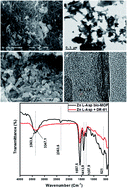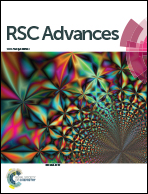Novel aspartic-based bio-MOF adsorbent for effective anionic dye decontamination from polluted water
Abstract
In this study, a cost-effective powdered Zn L-aspartic acid bio-metal organic framework (Zn L-Asp bio-MOF) was reported as an efficient adsorbent for Direct Red 81 (DR-81) as an anionic organic dye. The prepared bio-MOF was characterized using Fourier-transform infrared spectroscopy (FTIR), X-ray diffraction (XRD), scanning electron microscopy (SEM), field emission transmission electron microscopy (FETEM), surface area analysis (BET), and thermal gravimetrical analysis (TGA). The resulting bio-MOF has a large surface area (180.43 m2 g−1) and large mesopore volume (0.144 cm3 g−1), as well as good chemical inertness and mechanical stability. The optimum dosage from the Zn L-Asp bio-MOF was 1.0 g L−1 at pH = 7 for 95.3% adsorption of 10 ppm DR-81 after 45 min. Thermodynamic analysis results demonstrated that the decontamination processes were done with spontaneous, thermodynamically, and exothermic nature onto the fabricated bio-MOF. Kinetic parameters were well-fitted with pseudo-second-order kinetics, and the adsorption process was described by the Freundlich isotherm. The adsorption data proved that Zn L-Asp bio-MOF is an effective adsorbent for DR-81 from aqueous solutions with high stability and recycling ability for eight cycles, as well as the easy regeneration of the sorbent.



 Please wait while we load your content...
Please wait while we load your content...